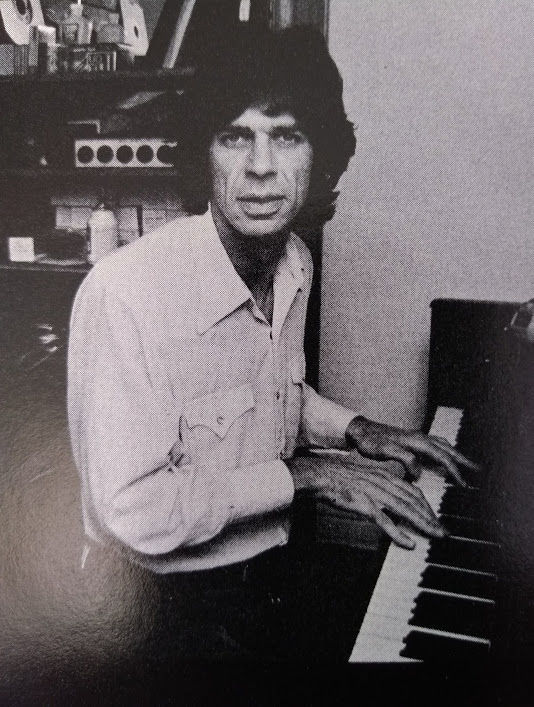他者の苦痛
Pain in others

他者の苦痛
Pain in others

「故人が死ぬ前に苦痛を経験したかどうかという心配は親族縁者の次のような質問に典型的に表れている。
『先生、彼は死ぬ前にとても苦しんだので しょうか?』と。……苦痛があったかどうかをたずねられると医師は一般に『いいえ』と答え、次のような医師による「配慮や苦心の表現」とでも言えるような 返答をするようだ。
すなわち『鎮静剤のおかげで、彼は最期まで苦痛や不快な感じはなかったことは確かです』」(船津衛訳、1981:471-2、ただし文 章は適宜変えています)。
原出典:サドナウ(Passing on: The social organization of dying. 1967:146)
引用出典:リンドスミス、ストラウス、デンジン『社会心理学』船津衛訳、恒星社厚生閣出版、1981年(原著の第5版)
| David Sudnow (mort
le 20 juillet 20071) était un sociologue américain. Il était l'un des
premiers représentants de l'ethnométhodologie avec Harvey Sacks,
Michael Lynch, etc. Il a complété un PhD en sociologie à l'Université de Californie (Berkeley) en 1965. Son premier ouvrage constitue une contribution importante à la sociologie de la mort. Également intéressé par la musique jazz, il a développé une méthode d'apprentissage du piano à partir de ses travaux (Ways of the hand : the organization of improvised conduct, 1978). Il a été lauréat du Guggenheim Fellowship. https://fr.wikipedia.org/wiki/David_Sudnow |
デヴィッド・サドナウ(2007年7月20日没1
)は、アメリカの社会学者である。ハーヴェイ・サックス、マイケル・リンチなどとともにエスノメソドロジーの最初の代表者の一人であった。 1965年、カリフォルニア大学バークレー校で社会学の博士号を取得。彼の最初の著書は、死の社会学への重要な貢献である。また、ジャズ音楽にも興味を持 ち、その著作をもとにピアノを学ぶためのメソッドを開発した(『Ways of the hand: the organization of improvised conduct』、1978年)。グッゲンハイムフェローシップを受賞。 |
| SUDNOW--David Nathan. With the
passing of David Sudnow on July 20, 2007 at Alta Bates Hospital in
Berkeley, California, came the loss of one of the last, great, original
ethnomethodologists; that small group of revolutionary sociologists who
believed that sociological studies of group processes were not simply
exercises in theoretical analyses or rationalizations after the fact
about people in groups, but rather were about social phenomena as
concrete observable facts (though often unacknowledged in situations).
In part derivative of the original observational methods of Emile
Durkheim's classical ''Suicide'' and the phenomenology of Edmund
Husserl, these ethnomethodologists would go into a psychiatric clinic
and ask for the embarrassingly difficult factual, observational
differences between patients and care givers. One of them walked into
my biochemistry suite at the medical school and said, ''Oh, this is
what those about you would call a laboratory.'' They flushed the
unwritten rule dividing the patient's and doctor's coffee machines in a
psychiatric ward by violating it. They demonstrated the strange set of
unwritten rules among chess players by upsetting an opponent
irrationally by simply exchanging pawns without any alteration in
position. In 1964, four years before Harold Garfinkel's, another of the
pioneers, book was published, ''Studies in Ethnomethodology'', Sudnow
published the field defining book, ''Passing On: The Social
Organization of Dying,'' now in its twenty-eighth edition, from the
data collected during two years of on-site observations. It was a
painful explication of the ''facts'' about how social class affected
the choice and execution of real procedures relevant to health care and
dying in a charity hospital. He was early into studies of conversation
about what was really going on between people conversing. Along with
Harvey Sachs, another of this elite group of social analysts, Sudnow's
classical work was about ''glancing.'' In 1972, he edited and published
''Studies in Social Interaction.'' He applied his phenomenological
point of view to the interaction of gamer and game, the video game-user
interphase, and published ''Pilgrim in the Microworld'' in 1984. He was
best known for his 1978 book, ''Ways of the Hand, The Organization of
Improvised Conduct'', for which he was awarded the Guggenheim
Fellowship. It detailed his personal account of learning
improvisational jazz on the piano. It was written from the same
what-is-really-going-on point of view. His method was radical and
completely atheoretical, no scales and chords, no required Bach-like
exercises, no figures in all keys, and no harmonic structure. He
followed this with a similarly oriented study of musical conversation,
''Talk's Body, a Meditation Between Two Key Boards'' in 1989. The
Sudnow Piano Method became a kind of artistic self realization movement
mediated by imaginative web site interactions and material. It was so
popular, at one time or other it involved interactions with 25,000
piano students. His piano pedagogy pulled him from a distinguished
academic career in which for 15 years, he held professorial status at
the University of California at Santa Barbara, University of California
at Irvine, University of California at Berkeley, and various visiting
professorships in Europe. He will certainly be missed by thousands of
his piano students. Less well known is that we also have lost one of
the four or five revolutionary sociologists of the 1960's and 1970's
whose ethnomethodologically oriented work augured the present, highly
controversial ''deconstructionist'' era across the sciences. David
Sudnow was 68. He is survived by his wife, Wendy Lu, a sister, Naomi
Rubine, children Paul and Jessica, and two grandchildren. Arnold J.
Mandell, M.D., MacArthur Prize Fellow Laureate in Theoretical
Neurosciences. https://archive.nytimes.com/query.nytimes.com/gst/fullpage-990CE1D6113AF935A2575AC0A9619C8B63.html |
サドナウ--デイヴィッド・ネイサン
集団のプロセスに関する社会学的研究は、単に理論的な分析や集団の中の人々についての事後的な合理化の訓練ではなく、むしろ具体的な観察可能な事実として
の社会現象(状況においてしばしば認識されないが)についてであると信じた革命的な社会学者の小グループである。エミール・デュルケームの古典的な「自
殺」やエドムンド・フッサールの現象学が元になっている観察法もあり、これらのエスノメソドロジストは精神科のクリニックに入り、患者と介護者の間の恥ず
かしいほど難しい事実、観察上の差異を聞き出すのである。そのうちの一人が、医学部の私の生化学室に入り、「ああ、これこそ、あなたがたの周りにいる人た
ちが研究室と呼ぶものだ」と言ったのです。彼らは、精神科病棟の患者用と医師用のコーヒーマシンを分ける不文律を破って流したのです。チェスでは、ポーン
を交換しただけで相手が不条理に動揺してしまうという、棋士の間の奇妙な不文律を実証した。もう一人の先駆者であるハロルド・ガーフィンケルの著書「エス
ノメソドロジー研究」が出版される4年前の1964年、スドナウは2年間の現場観察で集めたデータから、この分野を代表する著書「パッシングオン:死の社
会組織」(現在は第28版)を出版しました。この本は、慈善病院における医療と死に関する実際の手続きの選択と実行に社会階級がどのように影響するかとい
う「事実」を痛烈に描写したものであった。彼は、会話している人々の間で実際に何が起こっているのかについての会話の研究に早くから取り組んでいました。
社会分析家のエリート集団であるハーヴェイ・サックスと並んで、スドナウの代表的な研究は「視線」についてのものでした。1972年、彼は
''Studies in Social
Interaction''を編集・出版した。その現象学的視点をゲーマーとゲームの相互作用、ビデオゲームユーザーインターフェイズに適用し、1984
年に''Pilgrim in the
Microworld''を出版した。1978年にグッゲンハイム・フェローシップを授与された著書『手の内、即興行為の組織化』(邦訳は『即興行為の組
織化』)で最もよく知られている。この本は、彼がピアノで即興ジャズを学ぶ際の個人的な記録を詳細に記したものである。この本は、同じように「何が本当に
起こっているのか」という視点で書かれている。彼のメソッドは過激で完全に無理論、スケールやコード、バッハのような必須練習曲、すべてのキーにおける図
形、和声構造もない。彼はこれに続き、1989年に同じような志向の音楽的会話の研究である''Talk's Body, a Meditation
Between Two Key
Boards''を発表している。スドナウ・ピアノ・メソッドは、想像力豊かなウェブサイトでのやり取りや素材を媒介に、一種の芸術的自己実現運動となっ
た。それはとても人気があり、一度や二度は、25,000人のピアノの生徒との交流がありました。彼のピアノ教育学は、カリフォルニア大学サンタバーバラ
校、カリフォルニア大学アーバイン校、カリフォルニア大学バークレー校で15年間教授を務め、ヨーロッパで様々な客員教授を務めるという優れた学術的キャ
リアから彼を引き離しました。彼のピアノを学んだ何千人もの生徒たちが、彼の死を惜しんでいることは間違いない。あまり知られていないが、1960年代か
ら1970年代にかけての革命的な社会学者4、5人のうちの一人で、そのエスノメソドロジー的な研究は、科学界全体で大きな議論を呼んだ現在の「脱構築主
義」時代を予感させるものだった。デイヴィッド・スドナウは68歳であった。妻のウェンディ・ルー、姉のナオミ・ルービン、子どものポールとジェシカ、2
人の孫がいる。アーノルド・J・マンデル、医学博士、理論神経科学におけるマッカーサー賞受賞者。 https://www.deepl.com/ja/translator |
| Sudnow, David (1965) 'Normal
crimes: sociological features of a penal code in a public defender's
office', Social Problems 12: 255-76 Sudnow, David (1967) Passing on: the social organization of dying. Englewood Cliffs, N.J.: Prentice-Hall Sudnow, David (1972) 'Temporal parameters of interpersonal observation'. In: David Sudnow, ed. Studies in social interaction. New York: Free Press: 259-79 Sudnow, David, ed. (1972) Studies in social interaction. New York: Free Press Sudnow, David (1978) Ways of the hand: the organization of improvised conduct. London: Routledge & Kegan Paul Sudnow, David (1979) Talk's body: a meditation between two keyboards. New York: Knopf Sudnow, David (1983) Pilgrim in a microworld. London: Heinemann Sudnow, David (2001) Ways of the Hand: A Rewritten Account. Cambridge, Mass. M.I.T. Press |
|
Copyleft, CC, Mitzub'ixi Quq Chi'j, 1996-2099